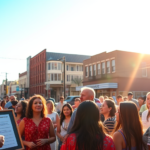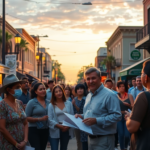Voters Nix Venue Proposal for the Third Time in Cameron County
Cameron County voters decisively rejected Proposition “A” on May 3, 2025, marking the third unsuccessful attempt to authorize the use of hotel and motel tax funds for the construction of a proposed $200 million entertainment venue. With a 60.90% majority (9,769 votes) opposing the measure and 39.10% (6,272 votes) supporting it, this defeat represents the largest margin by which the proposition has been rejected, reflecting a persistent skepticism among the local electorate regarding the project’s merits.
A Closer Look at Proposition “A”
Proposition “A” sought approval to channel existing taxes—specifically, a 2% hotel occupancy tax and a 5% motor vehicle rental tax—for the development of a multi-purpose arena. Additionally, the proposition would have established an admissions tax capped at 10% for events held at the venue, elevating the maximum hotel occupancy tax rate to 17% across Cameron County. Supporters contended that the arena would spur economic growth, attract tourism, and create jobs, leveraging existing tax structures without increasing the tax burden for residents.
However, the County’s voters have voiced their apprehensions through repeated rejections, suggesting that the perceived economic benefits do not outweigh concerns over fiscal prudence and prioritizing public funds. Arturo Peña, a local business owner, remarked, “While the idea of a new arena is attractive, the financial foundation and projected returns need to be rock solid. Past proposals have not convinced the community of their viability.”
Low Voter Turnout in Key Areas
The election underscored a notable lack of engagement in certain localities. In San Benito, for instance, only 268 constituents participated during early voting, with peak turnout at a mere 67 voters in one day. Countywide, participation reached only 7.24%, as 16,852 voters of the over 232,000 registered cast their ballots. Such turnout figures prompt questions about voter mobilization and the effectiveness of campaign outreach, particularly in regions that could significantly benefit from infrastructure projects.
Highlighting local sentiment, Maria Valdez, a civic activist, noted, “Voter participation is crucial in shaping our community’s future. Without everyone’s voice, we risk missing out on opportunities—or averting risks—that accurately reflect residents’ priorities.”
Complementary Elections Add Complexity
Adding to the electoral landscape, concurrent local elections in municipalities like Rio Hondo and the Port Isabel-San Benito Navigation District (PISBND) further complicated voter sentiments. For instance, PISBND, amidst controversy, held in-house elections for cost efficiency, resulting in low turnout with incumbents losing to Laguna Madre area candidates. Meanwhile, Rio Hondo endorsed a 0.25% sales tax increase for street upgrades, demonstrating voter willingness to approve tax measures when directly aligned with visible infrastructure improvements.
These wider voting patterns reveal nuanced perspectives on taxation and fiscal measures, reflecting a paradox where voters differentiate between immediate, tangible benefits and ambitious, yet less defined, long-term projects.
Implications for the Rio Grande Valley
The rejection of Proposition “A” is emblematic of a community cautious about potentially transformative projects funded through public means. This outcome signifies an imperative for leaders to closely assess community priorities and improve transparency in project planning. Additionally, proponents of such development initiatives must address public hesitancies around cost, viability, and economic impact honesty.
As the Rio Grande Valley navigates its growth, insights from this election reiterate the importance of inclusive dialogue between elected officials and Valley residents. Professor Elena Sanchez of the University of Texas Rio Grande Valley commented, “Connecting with constituents on sustainable development will be key—bridging gaps between visionary projects and community trust remains crucial for fostering regional progress.”
Looking Forward: Future Initiatives and Community Engagement
Going forward, stakeholders in Cameron County have the opportunity to refine their strategies and engage more extensively with residents to garner support for future initiatives. Building relationships with community leaders, hosting forums to address constituent concerns, and clearly outlining fiscal impacts could strengthen project proposals and resonate positively with Valley residents.
For those seeking to actively participate in local governance, Cameron County’s municipal websites and the Cameron County Elections Administration Office offer resources, outreach programs, and voting information that are instrumental in sustaining public involvement.
As subtle as it may seem, the rejection of Proposition “A” charts a preliminary for uncharted territory where calculated governance meets the ever-evolving aspirations of South Texas communities. As the region progressively looks toward shaping its identity and livelihood, the voices of its citizens remain not just valuable, but essential agents of change and growth.







